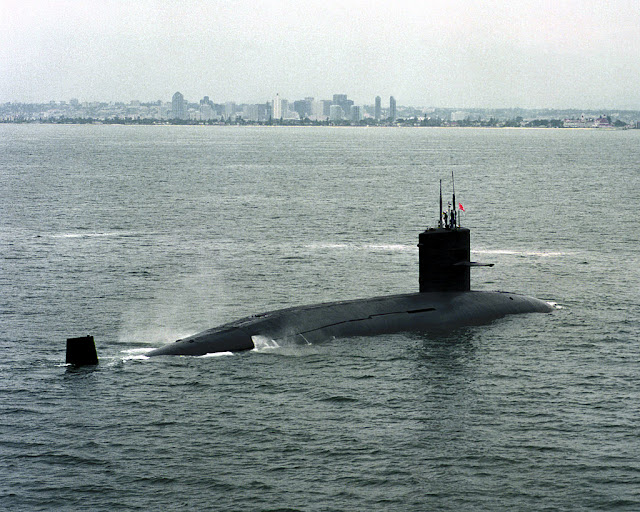After much discussion on Submarine Matters (hereand here) and elsewhere on the direction Naval Group is going with Australia's Future Submarine...
Some observations are:
Descriptions of a huge 50 year to design, build and upgrade submarine program are made by different people, at different times, for different purposes, targeting different audiences.
Disruptions to the future submarine selection process made it difficult for the Royal Australian Navy (RAN) and contestants to nail down finalsubmarine requirements and designs. Up to February 2015 then Prime Minister Abbott unilaterally chose Japan. From February 2015 a selection process hid the reality that Japan was quietly still the winner. Japan was ahead until Abbott was removed from the Prime Ministership in September 2015. Once Prime Minister Turnbull was appointed the field was opened up to the 3 contestants (Germany, France and Japan) with a normally 3 year submarine selection period being compressed into 7 months (September 2015 to April 2016).
Turnbull chose to rapidly publicise the Future Submarine winner on April 26, 2016 in order to win South Australian votes in the early July 2, 2016 National Election. With the pork barrel of a $50 Billion project mainly at Osborne, Adelaide, South Australia Turnbull’s submarine-to-win-the-election-strategy succeeded in getting his government over the line by one crucial electorate/district/seat/vote.
Naval Group (then DCNS) had to publicly react quickly to Turnbull’s premature (April 26, 2016) announcement with as positive and concrete a submarine package as possible. For example Naval Group’s concept submarine was termed the “Shortfin Barracuda Block1A” to indicate to the public that it was a solid building blockin a highly developed submarine program. Shortfin was also presented as a conventional outgrowth of an already highly developed Barracuda nuclear submarine program.
Final Issues To Be Decided In Years To Come
In fact in a huge submarine program specific submarine characteristics can only be assessed and finalised once a finalised scale model can be hydro-dynamically tested or even after the full-sized first of class begins trials in the open sea (noise? cavitation?) in about 2031. Issues include:
- length will fluctuate depending on many variables including the size of the bow sonar (Lockheed
Martin (LM) input as one small part of its combat system) and whether a pump jet is added or
rejected.
- diameter could fluctuate (how many decks, bunk sizes and numbers, arrangement of how many
torpedo tubes (LM), VLS? how many and size of diesels, batteries, fuel tanks, water ballast?
- fuel cell AIP? inefficient to carry the LOX over Australia’s long transit distances, lack of
observable French progress with Fuel Cell and lack of observable RAN interest
- the first pump jet as standard on a SSK class. This would be a radical solution for the
technologically conservative RAN
- RAN conservatism would also likely reject Australia becoming the second LIBs user after Japan.
At 8/10/17 5:13 PM someone with access to Naval Group thinking commented, in part:
“I think you will find that the [Australian Government] govt was well aware that both the DCNS & TKMS designs were just concepts (basic design only). Both required complete detailed design from scratch. Both would have used existing designs for reference (you don't reinvent the wheel unless you have to)...It will definitely be more like a conventional powered Barracuda than a stretched Scorpene (for a start you would have to stretch a Scorpene in all directions, not just make it longer)...”
A submarine builder’s technical design knowledge base, influencing future submarine designs, often goes back a century. The designs of the Scorpenes and Barracudas are only the latest. See the Table below.
Naval Group Submarine Development TABLE (by Pete)
Submarine (how many built?) | First Sub Laid Down | Last Sub Commissioned | Some still building? |
Classes pre Agosta | 1957 France only 1960? | many classes pre 1957 1960 1975 France & Export | No |
6 built France only | 1964 (1st commissioned 1971 | 2008 | No |
13 built | Early 1970s French, Spanish & Pak Navy | 2006, 3 Spanish, 5 Pakistani remain | No |
6 built 2,500 tonnes | 1976 | | No |
| Rebuilds of the 6 existing Rubis SSNs | 1995 | No |
4 built | 1986 | 2010 | No |
2 built--------------------- 2 built--------------------- 1 built so far ----------------------------- |
|
2006 2009 Malaysia 2016 (1st planned) 2020 (1st SBR-1) |
No No 5 x Kalvaris 1 per year |
SN-BR SSN just 1 DCNS designing non-nuclear portion. 4 to 5,000 tonnes. | 2024 (maybe) after the SBR-SSKs Brazil building reactor. | 2034 (or later) likely. Also depends on Brazilian economy. | 1 in medium-long term |
French only SSNs 6 planned | 2007 | 2029 for the last of the six | Yes |
| 2028? | 2052? Assuming all are SSKs? 1 built/2 years? | Future |
4 likely | 2035?
| 2050? Assuming one sub built every two years | Future |
Pete
















